Spider mites can wreak havoc on indoor and outdoor plants, but the right spray can eliminate these pests safely and effectively. This guide examines the most effective organic and natural spider mite killer sprays that are safe for plants, children, and pets while providing powerful protection for your garden.
Quick Picks: Best Spider Mite Sprays

Editor’s Choice

People’s Choice

Best Natural Concentrate
Understanding Spider Mite Infestations
Spider mites are tiny arachnids that feed on plant tissues, causing yellowing leaves, stunted growth, and eventually plant death if left untreated. These pests reproduce rapidly in warm, dry conditions, making early intervention crucial to prevent widespread damage.

Standard miticides often don’t affect unhatched spider mite eggs, making repeat applications necessary for complete elimination. The most effective sprays kill both adult mites and their eggs.
Signs of Infestation
Look for fine webbing on plants, yellow stippling on leaves, and tiny moving dots visible with a magnifying glass. Severe infestations show bronzing of foliage and premature leaf drop.
Vulnerable Plants
Spider mites commonly target houseplants, vegetables, fruits, herbs, cannabis, and ornamental plants. Plants under stress from drought or heat are particularly susceptible.
Treatment Timing
Apply sprays early morning or evening when temperatures are cooler. For indoor plants, turn off grow lights for at least an hour before treatment to bring mites out from leaf undersides.
Top 5 Spider Mite Killer Sprays
Growers Trust Spider Mite Killer
Editor's ChoiceHow Does It Work
How to Use
- Shake well before using
- Spray directly on affected plants, ensuring complete coverage of both upper and lower leaf surfaces
- Apply every 3-5 days for severe infestations until mites are eliminated
- Can be used at any growth stage, even up to harvest day
- Kills all life stages including eggs
- Non-toxic and biodegradable formula
- Safe for use up to day of harvest
- Available in multiple sizes from 32 oz to 25 gallons
- More expensive than some chemical alternatives
- May require multiple applications for severe infestations
GrowSafe Organic Spider Mite Killer Concentrate
People's ChoiceHow Does It Work
How to Use
- Dilute according to package directions - typically 1-2 oz per gallon of water
- Apply as a foliar spray ensuring complete leaf coverage, especially undersides
- Safe to use from seedling stage through harvest
- No protective equipment needed for application
- Bee-friendly formula protects beneficial insects
- No odor after application
- Can be used with bare hands safely
- Effective on a wide range of mite species
- Requires proper dilution as a concentrate
- May need frequent applications for severe infestations
Trifecta Crop Control Super Spider Mite Concentrate
Best Natural ConcentrateHow Does It Work
How to Use
- Mix 1-2 oz per gallon of water
- Spray thoroughly on all plant surfaces, focusing on leaf undersides
- Apply every 3-4 days until infestation is controlled
- Safe to use throughout the growing cycle
- Biodegradable and pet-friendly formula
- Works on multiple pest species beyond spider mites
- No harmful residues on harvested plants
- Concentrated formula is economical per application
- Strong natural oil smell during application
- Requires proper dilution and mixing
Organocide 3-in-1 Garden Spray
Most VersatileHow Does It Work
How to Use
- Shake well before use
- Spray directly from the bottle - no mixing required
- Ensure complete coverage of affected plants
- Apply every 7-14 days as needed
- Safe for most vegetables, fruits, and ornamental plants
- Triple-action formula treats multiple issues at once
- Ready-to-use without dilution
- Bee-friendly and eco-conscious
- Effective against all life stages of spider mites
- 24oz size may require multiple bottles for large gardens
- Oil can leave residue in very hot conditions
Doktor Doom Spider Mite Knockout
Fast-ActingHow Does It Work
How to Use
- Ensure good ventilation in the application area
- Spray plants thoroughly, focusing on undersides of leaves
- Hold can 18-24 inches from plants during application
- Safe to use up to one day before harvest
- Can be used indoors or outdoors
- Fast-acting formula shows results within hours
- Aerosol application reaches hidden mites
- Breaks down quickly with minimal residue
- Effective against resistant mite populations
- Contains pyrethrin which may affect some beneficial insects
- Aerosol application can make precise targeting difficult
Effective Spider Mite Control Strategies
Don’t repeatedly use sprays containing the same active ingredients. Spider mites quickly develop resistance when exposed to the same treatment multiple times. Rotate between different products for maximum effectiveness.

Healthy leaf – vibrant and undamaged

Early spider mite damage – yellow stippling
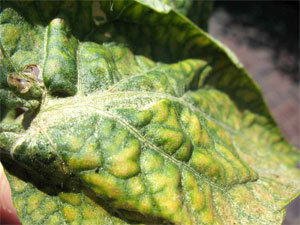
Severe infestation with webbing and bronzing
- Create Hostile Environments Increase humidity around plants through regular misting. Spider mites thrive in hot, dry conditions but struggle in humid environments. Keep plants well-watered to reduce stress that attracts mites.
- Apply Correctly Turn off grow lights for at least an hour before treatment to encourage mites to emerge from hiding. Spray during early morning or evening when temperatures are cooler for maximum effectiveness.
- Use Preventative Measures Regularly inspect new plants before introducing them to your garden or home. Quarantine any suspicious plants and treat them before placing near healthy specimens.
- Consider Biological Controls Predatory mites like Phytoseiulus persimilis and Amblyseius californicus feed on spider mites without harming plants. These can be purchased from garden suppliers for natural control.
Harnessing Natural Enemies of Spider Mites
One of the most effective and sustainable approaches to spider mite control is introducing and supporting their natural predators. This biological control method can provide long-term protection for your plants while reducing or eliminating the need for chemical interventions.
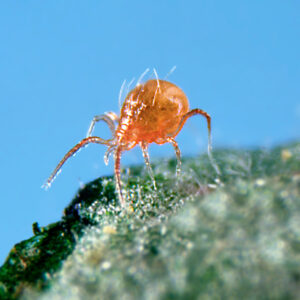
Phytoseiulus persimilis
- Specialized spider mite predator
- Fast-moving bright red mites
- Will enter webbing to hunt prey
- Best for active infestations
- Prefers humidity above 60%
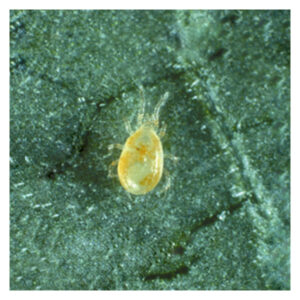
Neoseiulus fallacis
- Preventative control specialist
- Can survive on alternative food
- More pesticide-resistant
- Works in many environments
- Long-term protection
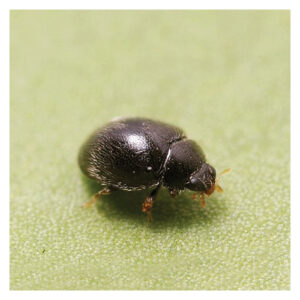
Spider Mite Destroyer
- Small black ladybeetle species
- Excellent flyer for coverage
- Tolerates lower humidity
- Consumes 75-100 mites daily
- Good for “hot spot” treatment
Choosing the Right Predator
Different predatory species excel in various conditions and for different levels of infestation. Scientific research from institutions like Penn State has shown that certain predators can consume up to nine mites per hour or 75-100 mites per day, making them formidable enemies to spider mite populations.
| Predator Type | Best For | Ideal Conditions | Application Method |
|---|---|---|---|
| Phytoseiulus persimilis | Active infestations, immediate control | Humidity >60%, temperatures 68-85°F | Direct application on infested areas |
| Neoseiulus fallacis | Preventative control, long-term protection | Humidity >50%, dense plant canopy | 1-2 mites per square foot |
| Amblyseius swirskii | Multiple pest issues (thrips, whiteflies, and mites) | Warmer environments, mediterranean climates | Slow-release sachets for 4-week protection |
| Stethorus punctillum (Spider Mite Destroyer) | Localized “hot spots” of high infestation | Tolerant of various humidity levels | Release adults near heavily infested plants |
| Feltiella acarisuga (Predatory Gall Midge) | Greenhouse crops, searching ability | Protected environments | Adults locate and lay eggs near spider mite colonies |
Natural enemies like predatory mites are vital for biological control in professional horticulture, contributing to integrated pest management by controlling spider mites without chemicals. A single application can create self-sustaining populations that provide ongoing protection.
Best Practices for Using Beneficial Predators
- Release Timing is Critical Introduce predators at the first sign of mite infestation, before leaf damage becomes serious (more than 4 mites per leaf), as control becomes more difficult with established infestations. Early intervention allows predators to establish and prevent population explosions.
- Create Favorable Conditions Most predatory mites do best with humidity levels above 50%. For indoor plants, periodically misting leaves can help create micro-environments that favor predatory mites while making conditions less hospitable for pest mites that prefer dry conditions.
- Application Rates For light infestations, apply 2-4 predatory mites per square foot. For heavy infestations, increase to 5-10 mites per square foot with weekly or bi-weekly introductions as needed. Concentrate releases on hot spots where spider mite populations are highest.
- Avoid Disruptive Chemicals Many predatory mites are resistant to certain pesticides, allowing them to survive in treated environments better than other biological controls. However, always check for chemical compatibility before releasing predators into recently treated areas.
- Combine Multiple Predator Species Using a combination of predator species can enhance control efficacy. For example, release fast-acting P. persimilis to tackle existing infestations while simultaneously introducing N. fallacis for long-term prevention.
Tips for Successful Predator Release:
- Release predators during cooler parts of the day (morning or evening)
- For indoor plants, turn off grow lights before release
- Gently rotate containers to distribute predators evenly in carrier material
- Keep plants adequately watered to reduce stress
- Provide fresh foliage with some pollen sources if possible
- Avoid chemical sprays after introducing predators
Creating a Predator-Friendly Environment
Beyond direct releases, you can encourage natural populations of predatory insects by creating favorable habitats in your garden.
Companion Planting
Plant flowering herbs like dill, fennel, coriander, and alyssum to provide pollen and nectar sources that support adult predators. Their presence attracts and sustains beneficial insect populations.
Moisture Management
Maintain proper irrigation to avoid drought stress, which makes plants more susceptible to mite infestations. Increase humidity in the crop microclimate during extremely hot or dry periods to favor predators and disadvantage spider mites.
Reduce Dust
Dusty conditions favor spider mites and hinder predator movement. Periodically hosing down plants, especially those near roads or dusty areas, helps keep predators active and effective.
Research has shown that some pyrethroid insecticides can remain highly toxic to predatory mites for several months to more than a year after application. Always check compatibilities before introducing beneficial insects, and consider waiting periods after chemical treatments.
Several reputable suppliers specialize in beneficial insects and predatory mites for biological control. Look for companies that guarantee live delivery and provide clear instructions for release and application. Many offer consulting services to help you select the right predators for your specific situation.
Alternative Spider Mite Control Methods
| Method | Effectiveness | Best For | Notes |
|---|---|---|---|
| Foggers/Total Release Products | High | Enclosed spaces, greenhouses | Requires evacuation during treatment; reaches hidden mites; like Pyrethrum TR Fogger |
| Neem Oil | Moderate | Organic gardens, preventative use | Natural option; less effective on severe infestations; requires regular application |
| Insecticidal Soap | Moderate | Light infestations, sensitive plants | Gentle on plants; requires direct contact with mites; frequent reapplication |
| Diatomaceous Earth | Low-Moderate | Soil treatment, preventative | Food-grade DE is safe around edibles; less effective in humid conditions |
| Predatory Mites | High (long-term) | Sustained control, organic gardens | Natural solution; takes time to establish; compatible with many organic sprays |
When treating indoor plants, turn off lights for at least an hour before application. Spider mites avoid light and hide on leaf undersides. Darkness brings them out into the open, making your spray treatment much more effective at direct contact.
Before Using Foggers or Total Release Products:
- Water all plants thoroughly
- Close all windows and doors in the treatment area
- Shut off all open flames, pilot lights, and ignition sources
- Follow manufacturer’s instructions for safe distance and duration
- Ventilate thoroughly after the recommended treatment time
Frequently Asked Questions
Can spider mites infest a house?
Yes, spider mites can infest homes. They can be transported on clothing, objects, or things that touch an infested plant. These pests are so small and light they can float on air currents from one location to another without being noticed.
Indoor spider mites may damage carpets, upholstery, wallpaper, textiles, and houseplants. Always thoroughly rinse new plants with water before bringing them inside to wash off potential pests and remove any residual pesticides from the leaves.
What are the first signs of spider mites?
The earliest signs of spider mite infestation include tiny yellow or brown spots on leaves (particularly on the undersides), fine webbing between stems or over leaf surfaces, and stippled discoloration that makes leaves appear dusty or speckled.
Spider mites feed by piercing plant cells and extracting their contents, causing affected areas to develop a yellowish or bronzed appearance before eventually dying and falling off. Regular inspection with a magnifying glass can help detect infestations before significant damage occurs.
What temperature kills spider mites?
Spider mite eggs can survive most temperature extremes and require exposure to temperatures below -4°C (25°F) or above 46°C (114°F) to be killed. Adult spider mites prefer temperatures between 13-38°C (55-98°F) and will die at sustained temperatures outside this range.
While high temperatures can kill spider mites, most plants would also be damaged at these temperatures, making heat treatment impractical. Cold treatments below 55°F can be effective but require at least 4 days of continuous exposure to significantly reduce populations.
How often should I spray for spider mites?
For active infestations, spray every 3-7 days for at least three applications to break the reproductive cycle. Spider mite eggs hatch every 3-5 days, so multiple treatments are necessary to eliminate newly hatched mites before they mature and reproduce.
For preventative treatment, applications every 2-4 weeks during growing seasons are typically sufficient. Always follow product label instructions for specific timing recommendations.
Are organic spider mite sprays as effective as chemical options?
Organic spider mite sprays can be equally effective when used correctly and consistently. While they may sometimes require more frequent application than synthetic chemicals, organic options offer significant advantages: they’re safer for beneficial insects, leave no harmful residues, and spider mites are less likely to develop resistance to them.
For best results with organic sprays, ensure complete coverage of plants (especially leaf undersides), apply during cooler parts of the day, and maintain a regular treatment schedule until the infestation is completely controlled.
For most gardeners, our top choice remains Growers Trust Spider Mite Killer due to its exceptional effectiveness against all life stages, including eggs, while maintaining environmental safety. For severe or resistant infestations, consider rotating between multiple products with different active ingredients to prevent resistance development.
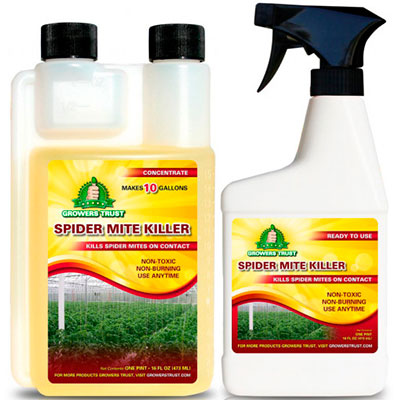
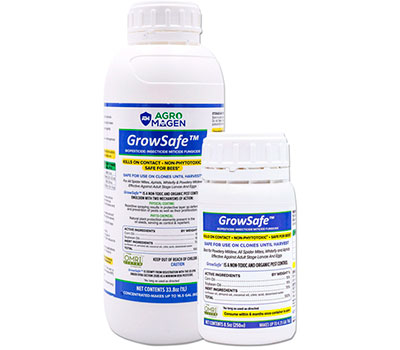
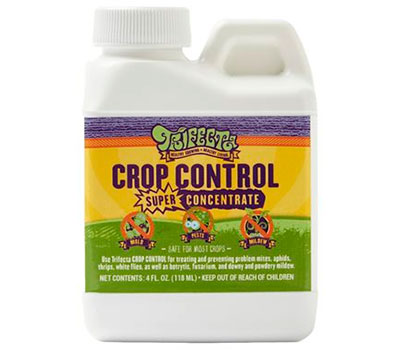
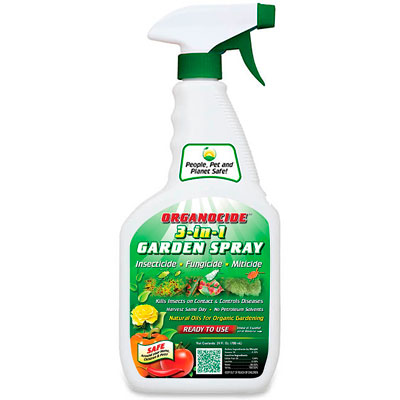
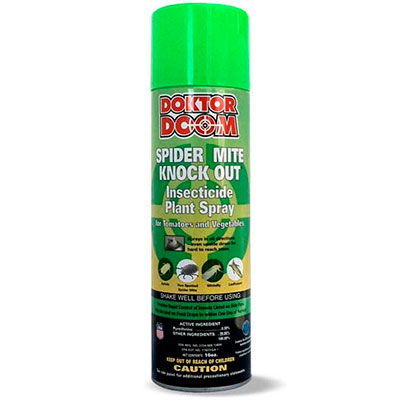


If you never get mites you don’t have to worry about killing them. I use SNS-209. This prevents the problem before it starts. I have been using this for the past 5 years. And I have had NO bugs. And I live across the street from a big farm. And this clown sprays his crops 4 times in 10 days and all the little shits try and come over and eat my gardens. Not going to happen they just keep on going. Another good thing about SNS-209 is its all organic and is even safe to use on day of harvest.
My advice is get yourself a electric fence paint sprayer, garden sprayers don’t cut it. Also you need a decent humidifier.
1 Cut off any crap on your plants, be brutal.
2 Use Dr Schimmels, covering the top of the pots with plastic. Use a minimum of 1 litre a plant. Put in humidifier and turn on and leave overnight in dark.
3 Leave about a week and repeat with PV killermite.
4 If bad you may need to repeat with another mite spray.
Wear good PPE. You want your plants to look like they’ve been through a car wash. Top and bottom of leaves. If you think you have sprayed enough it you ain’t!. No humidifier and they will be back. Leave humidifier on full and seal up lights and fans off till morning.
The issue isn’t that the spray doesn’t work it’s in it’s application. You will find resistant mites but they can’t resist all.
Hope this helps.
What is the best way to eradicate spider mites on my fitzer hedge? They have completely taken over. It is a hedge the length of my yard and I am in no condition to dilute or mix a product. I have read about WipeOut. Would that be a recommendation for me? Thank for help
Okay Spider Miter haters, I never had any bugs before. I walked into my flowering room and it seemed over night there was a 4 by 5 foot web right in the middle if the room. For 9 months I ran the through everything that I could get my hands on, even killed a whole crop. Could only knock them down, but not get rid of them. Than I found Spider Mite Killer. I like what it said, so I bought enough for 5 gallons at $100. I hit them once with 2 gallons on 15 plants. Saw a knock down, but that was it. The next night I made three gallons and sprayed them to the point that there was a puddle covering the floor. BOOM! A big knock down! Bought 2 more 5 gallon bottles, hit them again in 2 days, and again in 3 days. Enough to get the next harvest out. Now I am working on the 4 day BATHING, not spraying, BATHING. I am on my forth 5 gallon bottle and can now say I am winning the war. This weekend I am planning to clean and bleach the walls and floors, Clean the room outside the room, and throw in some boobs just to piss them off. Don’t battle them, go to war on them! Enjoy
Hi Everyone!
If you are physically getting eaten up with Spider Mites in your home (fleas & bed bugs, too) use Borax sparingly as needed.
Instructions: Boil 1 gallon of water and drop 1 table spoons of 9 Mule Train Borax into the water until completely dissolved. Remove from stove and allow to cool. With a Turkey Baster, remove any small chunks of Borax from the bottom of the water. Put the mixture into a spray bottle and spray everything in site!!! (1 tea spoon per gallon for pets; including bedding, pillows clothing in your closet (not silks since the Borax Salt will dry creating a small stain. It washes out when cleaned though). In amounts above, it is safe to spray pets once per week for fleas too.
Plants: Experiment here; I have used a lesser amount that seemed to work, but it can burn sensitive plant leaves. So let me know; you can start off with 1/16th per Gallon of water and work upward to the point of leaf burn. Trouble is, each species of plant will be different. Add in hot sun and this is going to be challenging. However, before summer and while still in the spring, try sprinkling the powdered borax into the soil sparingly…again…test…test…test.. and experiment before wide spread use.
I have read that Boron used to be prevalent in your soils but due to human mismanagement that plants are no longer getting the amount that most need, even humans need a small amount. Is it possible that Boron is one of the minerals that keep the bugs away??? Just a thought.
Humans!
For human skin infestation: Borax is accumulative…remember this as it is important and can be toxic; Google toxic reactions to Borax. Use common sense and you will have found a great treatment for mites and other critters, be stupid and you will wind up most probably in the ER. God gave man common sense, this is the time to use it. Now that I have scared you, here how I use Borax.
Bathtub: Sit in you’re bath tub and put in 1 teaspoon of borax start slow for an adult averaging 190-200lbs. Soak for an 45 to 60 minutes; not 15 minutes, not 30. 45-to an 1 hour and make sure the water is hot enough for comfort! Too cool and the benefit is reduced, too hot and your face sweats and you are uncomfortable. Use common sense, all you want to do is open up your pores so you can get to the little critters.
Remember I said Borax accumulates in the system? You will find the strength that is best for you by your weight and comfort. Hot water intensifies this so again use common sense. (I will be repeating this as too many people today lack this asset, so think…and listen to your body).
If, you’re in the tub and you begin to feel hot, begin to sweat, get thirsty, feel slightly weak, feel tension in the chest area or feel heart irregularities coming on; immediately 1) unplug the water in the tub and begin draining it 2) immediately turn on cooler water to rinse yourself from head to foot (modulate hot-cold to create the cool water/not ice cold) water to rinse yourself from head to foot 3) You should have a glass of iced water next to the tub, sip it 4) Now Relax in the water until everything feels normal and good again.
What happened? You had too much hot water and too much Borax! It accumulates and if you have a really bad infestation you will want instant relief and (throwing caution to the wind) push the boundaries of your body. Borax is a salt and people with heart conditions and other medical problems (on medications) have to work within the limitations or medical exclusions of their bodies…common sense…listen to your body and do your own research. There is a lot of misinformation out there about Borax.
What does this mean? If, the water is too hot and you use too much Borax your heart may race. Step out of the tub refill it with cooler water and “No Borax”. In other words, do not not over do it, common sense.
My experience; We lived in a very old house surrounded by a jungle of weeds (now add Chem-Trail experimentation/spraying) and I came down with a terrible, itchy red rash that was unbearable. Was this mites, probably, along with some tax payer upgrades…it was hell.
The infestation was so bad that I felt like I was being eaten alive, literally. Luckily, I a not too bad at research and found Borax.
I found that the minute I was in the tub with Borax, everything stopped! All was at peace and right with my world again! I then sprayed the everything in my house including walls, drawers and began washing my clothes in Borax.
Lol, it got to the point not even a damn mosquito would come near me!
I was 190 Lbs-200 Lbs, young and in very good health at the time I was hit with this. My case was so bad that for the first 6 months I was taking a bath every 2 hours. I would even wake up in the middle of the night and take a bath rather than lay in bed and feel that I was being eaten alive from within.
By the end of the year, I was down to 1 bath a day and the second year was 1 soaking bath a week. And, year three was on an as needed basis.
I started out with 1 Teaspoon in my bath and very, very slowly worked up to 1 Table Spoon over a period of 2 weeks. I stayed at this amount for about 6 – 8 months and as the die off began, I needed less ( I went from baths every 2 hours to once a week and then as needed). By the end of 3 years I was down to about 1/4 teaspoon! Anymore than that and I would begin to get thirsty and/or become light headed, a sign of too much Borax (and too hot of water).
Start low, and for animals use 1/4 teaspoon of Borax in a Gallon of water once a week on bedding. Less is better! You must be observant and consider weight. I have used 1 teaspoon in a gallon of water once a month on my cat areas with very good results.
REMEMBER: Borax does build up and can become toxic; heart palpitations, face flushing, etc. look up Side Effects. My experience has been “More is not Better” build up slowly for very bad conditions and they watch for signs that you need to lesson the dosage. It will come so expect it.
I have to emphasize this, it is important. Your comfortable dosage that works best, will most likely be what you have built up to slowly. Once you have peaked, you will begin to seek reactions. Being thirsty is one of the first (minor-reduce Borax-empty tub add more water and 50% less Borax), light headed (same), weakness ( Reduce Borax by 75%). Eventually you will not need the Borax, do not use it if you do not need it.
If you have liver issues or other medical risks use common sense as Borax is an ant killer and even though it is only a sodium product, even tap water in is toxic in large enough dosages. So, I know you will hate me for this…use common sense in all things.
I have spider mites in my bedroom. It seems no matter what I spray I can’t get rid of them. Last night I couldn’t sleep because they about eat me up. Are they in my carpet & HELP! What can I do.
Well If you really want them gone kill all your plants n throw em in the fire.
Some strains will produce fat nugs with spiders on em all the way.
……
I blew some smoke on a web of em on top of one plant and they all instantly died.
……
i used habanero peppers simmered them on the stove in a pan . sprayed my plants and well kept the levels down for a couple of days but they are back and stronger than ever .
not to mention killed me in the process that SH*t is hot and burns!
I got an infestation of them and literally tried everything. I eventually got so pissed that I took all my mother’s after my last harvest and put them in the shower and showered them with scalding hot water till I damn near killed the plant to. Then I popped a bomb in my veg tent zipped up, my bloom tent zipped up, and a 12.5 oz bomb just sitting in the middle of the room. After all of that, I still have spider mites, not infested like before but if I look hard enuf I will find one. I grew indoors for 3 years before I got the first bug of any kind in my garden. Then a friend brought me some clones to grow and that’s when the nightmare started. When I first started indoors I ran my garden like a science lab and never had a bug period, but I got laxxed and dropped my guard now I’m paying the price for it. If you see a yellowing leaf pull it and burn it, let no waste sit, if it’s dead or dying clip it and burn it. Don’t play games with mites by asking stupid questions and fucking go nuclear straight from the gate. If your garden is anything like mine then you have thousands of dollars worth of plants that are getting ate down to an ounce per plant by the time you harvest if your lucky. Piss on organic, Piss on natural, go straight to nuclear weapons against these little bastards and wipe them out before all them cool mason jars you’re used to curing bud in go to waste by not having enuf bud to fill them with. My last harvest I got a 1/4 pound per square meter, and that’s horrible. I damn near cried looking at the scales it was so bad. Stop asking stupid questions while your ladies are being eaten away at and buy some bombs and miticide, spend the money and I doubt you regret it.
I can relate to your pain and loss, been suffering from the borg since january! I have to say that like you i used miticides, bombs, even bloody sulpher, not to mention over £60 on predatory mites alone!! 11 months later and a few quid down, the mites still beat me!!! I used to call myself a grower, , halfway through the year i called myself a pest manager….now i have to hang up my watering can. i couldnt beat them, a friend told me that he had a year long battle, tried everything, adventually he got rid of everything, burned the lot. 5 years later he tried again, and the buggers returned!
Boil up hot peppers put it through a sif, then in a spray bottle and spray away. Kills them instantly and it’s organic and brings no harm to your plants.
Hi everyone, I don’t have any plants but the little BUGGERS have infested my garden she’d. Whenever someone goes in there they are immediately extremely itchy. There are fine webs all over the place. A pest controller had a go but just made it worse. Has anyone had similar problems?
Green cleaner, captain jacks and never oil don’t work just a waste of money. Wipe Out is the only thing I have used that really works After 10 days it leaves no residue and is non systemic leaving my smoke clean of chemicals
Wipe Out has not changed the formula after it was pulled for EPA label issues. It is the best stuff out there to get rid of mites and eggs sacs every time I have used it and from what I know it is the same original formula. Hard to believe but some people buy a quart for 2
$25.00 that is only suppose to cover 4 adult plants 4 to 5 feet tall and they spray 10 to 15 plants with it. So of course it wouldn’t be as affective. I have been growing for many many years and this stuff is the best stuff on the market. It is not systemic and leaves no residue after 10 days. A university study had results of not even a trace element left on the plant after 10 days making it great for growing smoke.
The Green Cleaner works fantastic!! Not cheap though. I’ve tried neem oil, safer and captain jack’s with no success. I’m growing mostly vegetables and some herbs. The mites really like tomatoes and for some reason I’ve got tons of aphids this year.
Captain jacks dead bug works can’t say much else… It works. More than just a mite killer. Thrips aphids all that kind of shite.:) happy slaughter
Wipeout worked great until they made them take it off the shelf for containing something that was not on the label . After it came back out something changed and it’s not as good anymore . I have used the original formula worked better than anything I ever used. T he new stuff did not get rid of them I thought it was a waste of money
I used a product called “wipeout” and it killed my spidermite problem and also took care of the eggs. This was an awesome product that was ready to use no mixing just sprayed my plants and after a couple of days later I scoped the plants to find dead mites. I found it at miwipeout.com and now my local hydro store carries it.
Wipeout was not completely effective and that means the mites came back. That was a total waste of $25.
I make my own mite killer now using peppermint oil, cinnamon oil, lemongrass oil and a few drops of soap as as emulsifier. Kills all the adults and pupae. Spray every 3 days.
Do I add water to this combo for spraying…I’ve been into the essentiel oils for a few years and a true believer. I have been phycialy attacked by these demon dustmites under my skin and it is a real nightmare…was forced to go to skin doctor after 6 weeks of festering dustmite infestation on hands,chest and other parts.. But I somewhat have had some skin healing,altho,they still keep me up at night scratching. I even got covers for my pillows and bedding but I believe they have totaly infested my bedroom carpet…I do know they are hard to get rid of.. should I spray my matress,pillows, carpet furniture etc… with this combo? This oil combo could get expensive without deluting with water some….please give me more instructions…I am truley desperate and reaching out!! Help!!!!
Use a product calledwipeout. Don’t listen to people that mix there own stuff. Leave it to the experts not some guy that thinks he is a scientist. He probably burns his plants. Wipeout is the product that will get rid of mites and eggs.
Yes, it’s diluted in water. I put at least 10 drops of each oil in about a half gallon or so of water. I also reduce the pH to around 3.5 (acid rain level). So far no leaf damage but I don’t do it every day.
Wipeout is always effective on all mites.You just used it wrong . It effectively kills mites and eggs. Best stuff on the market..
Like to just know what u use M8 …. That would help me and maybe others with this problem..
Thanks inadvance.
Dawn in a small amount mixrd in windex size spray bottle…it wont damage any cycle nor change plants or foliage in any way. It works within minutes.
Diatomaceous earth powder!!! I spent over £50 on all of the above and the spider mites laughed at me. Nearly destroyed my whole crop. This stuff kills them mechanically and has no nutritional value. Means no chems, no ph worry. Nothing.. One dusting all dead. Look at YouTube videos because you don’t want to breath it in as it microscopically sharp. Which kills them because they breath through their skin
Great to hear as I was wanting to use Diatomaceous earth powder. I tried shaking with a salt shaker but not sure if it worked as I still had some.
I am growing indoors. I have 4 plants 3 week into flower. I had a spider mite problem so I used a spider mite spray. I drenched the plants paying close attention to the undersides of the leaves. 2 days have gone by and the lower parts of the plants where I sprayed the most are shriveled brown on the tips and brittle. Tops seem healthy. Did I kill my plants? Are the having a chemical reaction.? I just wish I knew what to do to help my girls.
Read my next comment and never buy chems again. You also used chems in flower which could taste horrid. Make sure you flush extra long.. Like three weeks pure water at end.. Now, all leaves will shrivel and go brown once sucked dry.. As a matter of speaking.. Buy a jewels magnifying glass with light, their only £3 if that… You need to see if they’re all dead. They will destroy everything if not dead. If not get that Diatomaceous earth powder. Read my next post and YouTube it . Good luck